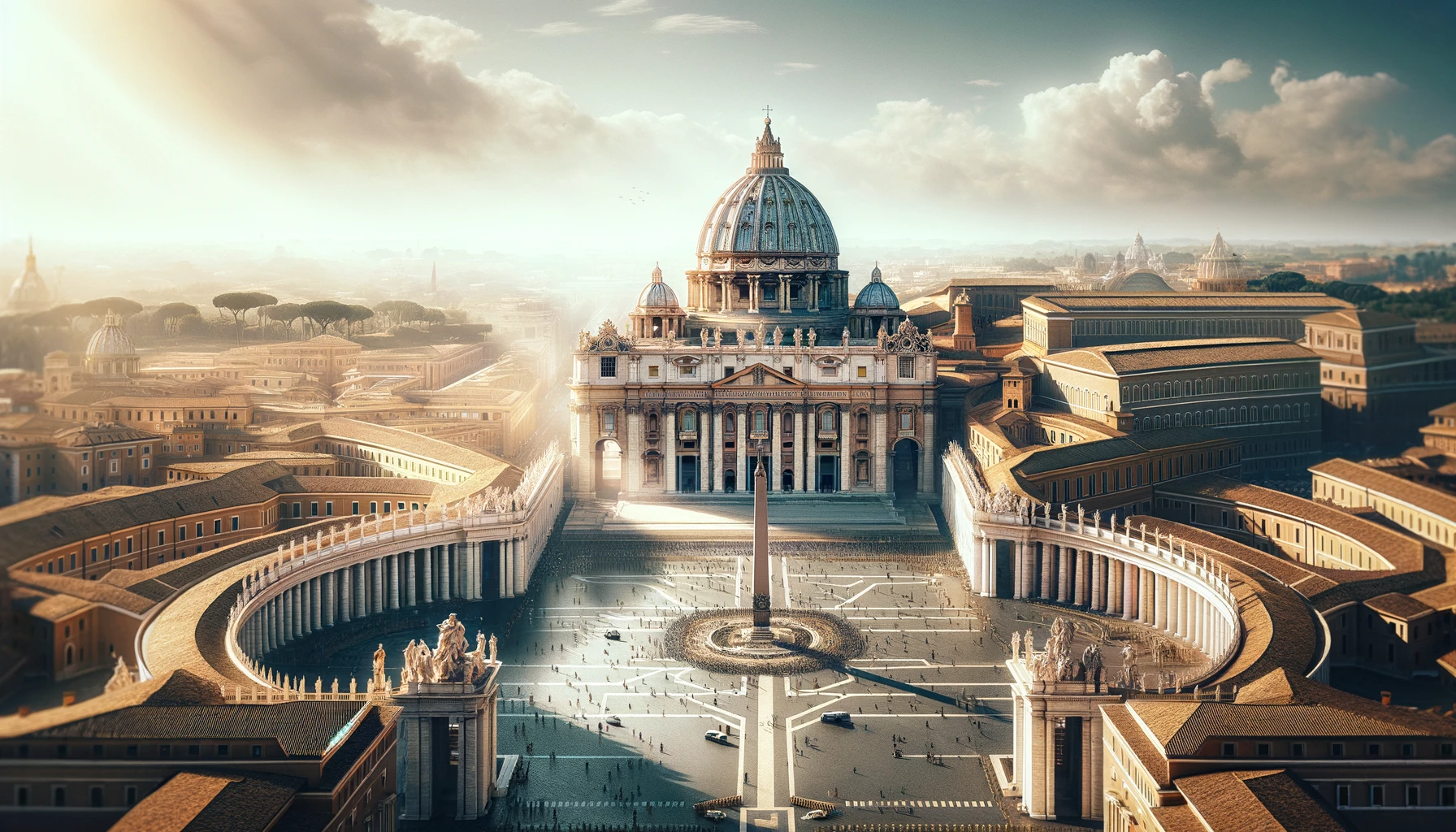Vatican City, while being the smallest state in the world, holds immense global significance as the spiritual and administrative hub of the Roman Catholic Church. Rich in history, culture, and religious importance, it continues to be a focal point for millions of Catholics worldwide and a testament to the enduring influence of religious and cultural institutions.
List of Public Holidays in Vatican City for the year 2024
- Solemnity of Mary, Mother of God: Monday, 1st January
- Epiphany: Saturday, 6th January
- Lateran Treaty Day: Sunday, 11th February
- Anniversary of the Election of Pope Francis: Wednesday, 13th March
- St Joseph’s Day: Tuesday, 19th March
- Easter Sunday: Sunday, 31st March
- Easter Monday: Monday, 1st April
- Feast of Saint George: Tuesday, 23rd April
- Saint Joseph the Worker: Wednesday, 1st May
- Feast of St Peter and St Paul: Saturday, 29th June
- Assumption Day Holiday: Wednesday, 14th August
- Assumption Day: Thursday, 15th August
- All Saints’ Day: Friday, 1st November
- Immaculate Conception: Sunday, 8th December
- Christmas Day: Wednesday, 25th December
- St Stephen’s Day: Thursday, 26th December

History
- Origins: The history of Vatican City is deeply intertwined with the history of the Catholic Church. It stands on the traditional site of St. Peter’s burial, dating back to the Roman Emperor Constantine in the 4th century.
- Papal States: For centuries, the Popes ruled over the Papal States, a large area across central Italy.
- Lateran Treaties: Vatican City was established as an independent state in 1929 with the signing of the Lateran Treaties between the Holy See and Italy.
- Recent Developments: Over the years, the Vatican has been a key player in global religious and political affairs, influencing a wide range of social and moral issues.
Geography
- Location and Size: The world’s smallest independent state, Vatican City is enclaved within Rome, Italy. It covers approximately 44 hectares (110 acres) and is surrounded by the Vatican walls.
- Key Features: The city-state includes the magnificent St. Peter’s Basilica, the Vatican Gardens, the Apostolic Palace – the Pope’s residence, and various administrative and religious buildings.
Culture
- Religious Significance: As the spiritual and administrative center of the Roman Catholic Church, it is a major pilgrimage site. The Pope’s weekly audience, liturgical celebrations, and Angelus prayers attract thousands of visitors.
- Art and Architecture: Home to some of the world’s most famous art and architecture, including the Sistine Chapel with Michelangelo’s frescoes, St. Peter’s Basilica, and the Vatican Museums.
- Cultural Influence: Beyond its boundaries, the Vatican exerts considerable cultural influence through its religious teachings, traditions, and the global network of the Catholic Church.
Economy
- Revenue Sources: Vatican City’s economy is supported by contributions from Roman Catholics around the world (Peter’s Pence), profits from the Vatican Museums, and sales of postage stamps, tourist mementos, and publications.
- Financial Administration: Managed by the Administration of the Patrimony of the Apostolic See, with recent efforts directed towards financial transparency and regulatory compliance.
- Real Estate and Investments: Owns significant real estate holdings and investments, contributing to its economy.
Society
- Population: Inhabitants include clergy, members of religious orders, Swiss Guards, and lay workers who maintain the city-state’s administrative functions.
- Languages: Italian is the commonly used language, along with Latin for official Vatican documents.
- Living in the Vatican: Life in Vatican City is primarily centered around religious duties and administrative tasks. It does not have conventional residential neighborhoods or public services found in other cities.
Government and Administration
- Governance: The Pope is the head of state and government, exercising principal legislative, executive, and judicial power.
- The Holy See: The central governing body of the Roman Catholic Church, the Holy See, operates from Vatican City but has a distinct legal existence and international presence.
- Diplomatic Relations: The Holy See maintains diplomatic relations with numerous states and international organizations, focusing on religious freedoms, humanitarian aid, and global peace.
Religious Role and Activities
- Spiritual Leadership: The Pope, as the Bishop of Rome, is the spiritual leader of the world’s approximately 1.2 billion Catholics.
- Religious Ceremonies: Vatican City is the hub for significant religious ceremonies, including Easter, Christmas, canonizations, and beatifications.
Tourism and Pilgrimage
- Major Attraction: It is a major destination for religious and cultural tourism. Key attractions besides St. Peter’s Basilica and the Vatican Museums include the Vatican Library and the Vatican Gardens.
- Impact of Tourism: Tourism is a crucial component of its economy, with millions visiting Vatican City each year for its religious significance and artistic heritage.
Challenges and Future Outlook
- Modernization and Reforms: Facing challenges like modernizing its administration, handling financial scandals, and addressing global issues that affect the Catholic Church.
- Global Catholic Issues: Continuously engaged in addressing contemporary global issues, including social justice, environmental concerns, and interfaith dialogue.

